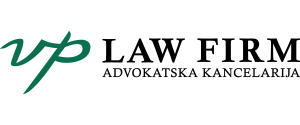Selena Gojković • dec 29, 2021
Bank lending in Q3 2021
Data released by the National Bank of Serbia (NBS) in its Q3 2021 Trends in Lending Report suggest that year-on-year (y-o-y) growth in lending gradually began to accelerate in Q3, when total domestic loans to the non-monetary sector were 6.6 percent higher than one year previously as a result of the increased volume of lending, notably to the corporate sector. Borrowing conditions in the Serbian market remained favourable in Q3 2021.
Lending to businesses
Year-on-year growth of corporate loans picked up to 5.1 percent in September (from 2.9 percent in June). In Q3, excluding the exchange rate effect, corporate loans rose by RSD 49.1bn or 3.5 percent, the greatest quarterly increase since Q1 2020.
Liquidity and working capital loans, supported as they were by government guarantee schemes, accounted for the bulk of corporate loan growth in Q3 (at RSD 41.8bn). Increases were also recorded for investment loans, other non-categorised loans, and import financing loans, while the stock of export loans remained virtually unchanged.
Companies across all industries increased their borrowing in Q3, with manufacturing, transport, and agriculture leading the way. Lending to micro-enterprises and small and medium-sized firms accounted for 67.3 percent of all corporate loans in September, having seen y-o-y growth of 4.5 percent. Long-term loans made up 85.3 percent of all corporate borrowing in September.
The share of non-performing loans (NPLs) in total loans to corporates equalled 2.9 percent in September, the same as at end-June, and was 22 percentage points (pp) lower relative to July 2015, just before the NPL Resolution Strategy (Official Gazette of the Republic of Serbia, No. 72 of 19 August 2015) first came into effect.
In Q3, the weighted average rate on new dinar-denominated corporate loans stood at 3.0 percent, down 0.3pp on Q2. At 2.3 percent, the weighted average interest rate on new euro and euro-indexed loans to corporates in Q3 was also slightly lower than in Q2.
Lending to households
Year-on-year growth in household loans slowed in Q3 to 9.2 percent in September (as against 10.6 percent in June). In this quarter, household loans increased by RSD 37.8bn or 2.9 percent, excluding the exchange rate effect.
More than one-half of this growth came from housing loans, which continued to see acceleration of y-o-y growth to 16.4 percent in September, spurred on by favourable borrowing conditions and growing disposable incomes. Home loans were followed by cash loans, with liquidity and working capital loans extended to sole traders in third place. Other non-categorised loans fell by RSD 2bn, whilst investment loans to sole traders dipped by RSD 1.1bn.
Throughout 2021, the NBS enacted a number of policies that extended housing loan maturities by up to five years and reduced loan deposits for first-time home buyers to 10 percent.
New household loans amounted to RSD 135.2bn in Q3, an increase of 12.6 percent on Q3 2020.
The share of NPLS in total household loans fell by 0.1pp in September to 3.9 percent. This figure was 7.3pp lower than before the NPL Resolution Strategy became effective.
The weighted average interest rate on new dinar loans to households in Q3 (at 8.6 percent) dropped by 0.1pp relative to Q2, whereas the weighted average interest rate on new euro-indexed housing loans edged up by 0.1pp to 3.2 percent in Q3.
Credit standards were eased in Q3 2021 for both dinar and euro-indexed household loans. Demand for housing loans increased, with banks citing real estate purchases as the key driver of growth. This high demand is expected to continue into Q4 due to the same underlying factors as in the previous quarter.
* Non-Performing Loan Resolution Strategy (Official Gazette of the Republic of Serbia, No. 72 of 19 August 2015)


